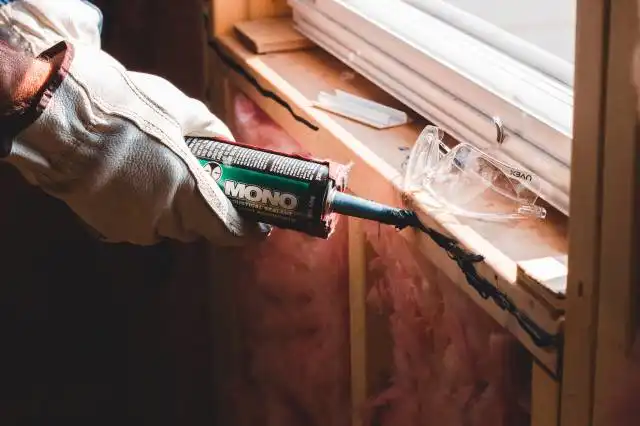Start a Pilates Studio
Shaping Bodies and Lives: Your Journey into the Wellness Industry
| Updated


PILATES STUDIO
Delve into the nice and stretchy world of having your own Pilates Studio! This business has you running a wellness hub where enthusiasts come to strengthen their posture, improve flexibility, and enhance mind-body equilibrium, all under your watchful and trained gaze. As a new entrepreneur, you'd be shaping bodies and lives like modern-day Michelangelo, only your canvas is a fitness mat and your chisel a set of pilates resistance bands. Yes, it's a thriving business unifying calm minds with toned bodies!
Jump to Business Plan
RELATED BUSINESS IDEAS
Browse ALL Health & Beauty Innovations Business Ideas
Discover Your Perfect Domain
Unlock the door to your online success with our hand-picked selection of premium domain names. Whether you're starting a new venture or rebranding an existing one, the right domain can set the tone for your digital presence. Browse through our curated list, each with its unique potential to enhance your brand's visibility and credibility.
PILATES STUDIO MINI BUSINESS PLAN
This a quick reality check to help you identify the strengths and weaknesses of your business concept before you dive in.
Business Analysis: Pilates Studio
Expected Percent Margin:
- Gross Margin: 50-70%
- Net Profit Margin: 15-25%
Earnings Expectations:
- Daily Earnings: $150 - $300
- Weekly Earnings: $1,050 - $2,100
- Monthly Earnings: $4,500 - $9,000
- Annual Earnings: $54,000 - $108,000
Actions to Hit Those Numbers:
Class Management:
- Class Offering: Offer a diverse range of 5-8 different classes to cater to different levels and interests.
- Schedule: Maintain a class schedule of at least 35-40 classes per week.
Marketing and Client Acquisition:
- Social Media Advertising: Invest in social media advertising (primarily Facebook and Instagram). Post 3-4 times a week and spend $200-$300 per month on boosted posts.
- Local Networking: Attend local health and wellness events to promote your studio.
Client Retention & Satisfaction:
- Customer Service: Hire friendly, customer-oriented front desk and support staff.
- Exceptional Instructors: Recruit and retain highly qualified Pilates instructors, as they are the studio's "product".
Cost Control:
- Rent: Opt for a rental space within a desirable location but remains within 10% of your expected monthly sales.
- Utilities and Maintenance: Expect about $200-$400 per month in utilities, and keep a separate budget for ongoing equipment maintenance and replacement (around $500-$1000 annually).
Business Operations:
- Membership Structure: Tiered membership pricing should be chosen which encourages long-term commitments (around $100-$150 per month).
- Client Volume: Aiming for at least 10-20 clients per day in a combination of classes and private training sessions.
Bear in mind that these figures are indicative and could vary based upon geographical location, competition, and the specific niche your Pilates studio is catering to. Always consult with a business or financial advisor for personalised advice.
NOT WHAT YOU HAD IN MIND? Here are more ideas



Browse ALL Health & Beauty Innovations Business Ideas
Grab Your Business Website Name
Before you get caught up in the whirlwind of setting up your business, invest in a domain name. It's a small but significant step that lays the foundation for your brand and makes it easier for customers to find and trust you. Just like you wouldn't build a house without securing the land first, don't build a business without securing your domain name.
"Why? Can't that wait?" Here's why it shouldn't
Step 1: Determine if Starting a Pilates Studio is Right for You
Breakdown of Startup Expenses
Before starting a Pilates studio, it is important to understand the startup costs that will be involved. These costs can include the cost of renting or purchasing a space, purchasing equipment, hiring staff, and advertising. It is important to research the local market to determine the cost of renting or purchasing a space and to determine the cost of any necessary equipment. Additionally, it is important to consider the cost of hiring staff, such as instructors and receptionists, and the cost of advertising to attract new customers.
Breakdown of Ongoing Expenses
Once the Pilates studio is up and running, there will be ongoing expenses that must be taken into consideration. These expenses can include the cost of rent or mortgage payments, the cost of utilities, the cost of equipment maintenance, and the cost of staff salaries. Additionally, it is important to consider the cost of advertising and marketing to maintain a steady flow of customers.
Examples of Ways to Make Money
Once the Pilates studio is up and running, there are a variety of ways to make money. These can include offering private sessions, group classes, and workshops. Additionally, Pilates studios can offer memberships and packages that offer discounts on classes and services. It is also important to consider offering merchandise such as Pilates mats and apparel. Lastly, Pilates studios can offer additional services such as nutrition counseling and massage therapy to increase their revenue.
Step 2: Naming the Business
When it comes to naming a business, it is important to choose a name that is memorable, easy to pronounce and spell, and that accurately reflects the services that the business provides. It is also important to make sure that the name is not already in use by another business. Additionally, it is important to consider the implications of the name in other languages, as well as the potential for trademark infringement.
When it comes to choosing a name for a Pilates studio, it is important to choose a name that is related to Pilates and that reflects the atmosphere of the studio. For example, a name like “The Pilates Place” or “Pilates Plus” could be used to reflect the studio’s focus on Pilates and the welcoming atmosphere of the studio. Additionally, the name should be unique and memorable, so that it stands out from other Pilates studios in the area.
When it comes to registering the business name, it is important to check with the local government to make sure that the name is not already in use. Additionally, it is important to check with the United States Patent and Trademark Office to make sure that the name is not already trademarked. Once the name is chosen and registered, it is important to create a logo and website for the business, as well as any other branding materials that may be needed.
Finally, it is important to make sure that the name of the business is reflected in all of the business’s marketing materials and advertising. This will help to ensure that potential customers are able to easily identify the business and its services. Additionally, it will help to create a strong and recognizable brand for the business.
Step 3: Secure Financing
When starting a Pilates studio, it is important to secure financing to cover the initial startup costs. Depending on the size of the studio, the amount of money needed can range from a few thousand to tens of thousands of dollars. There are several options for financing a Pilates studio, including personal savings, small business loans, and crowdfunding. Personal savings are the most common form of financing for small businesses, but it is important to make sure that the money is not needed for other purposes. Small business loans are another option, and these can be obtained from banks, credit unions, and online lenders. Finally, crowdfunding is a great way to raise money for a Pilates studio, as it allows people to donate money to the cause.
Business Plan
In order to secure financing for a Pilates studio, it is important to create a business plan. A business plan should include a description of the business, a market analysis, a financial plan, and a marketing plan. The business plan should also include an executive summary, which is a brief overview of the business and its goals. Additionally, the business plan should include a detailed budget that outlines the startup costs and ongoing expenses. Finally, the business plan should include a timeline for when the business will be up and running.
Financial Projections
In addition to the business plan, it is important to create financial projections for the Pilates studio. Financial projections are estimates of the future income and expenses of the business. These projections should include the expected revenue and expenses for the first year of operation, as well as projections for the next three to five years. Financial projections should also include a break-even analysis, which is an estimate of when the business will start to make a profit. Finally, financial projections should include a cash flow statement, which shows how much money is coming in and going out of the business.
Step 4: Find a Location
When choosing a location for a Pilates studio, it is important to consider the area’s demographics, the local competition, and the cost of rent. It is also important to consider the size of the space and the type of facility. For example, a larger space may be necessary if the studio will offer group classes or private sessions. Additionally, the studio should have enough space to accommodate the necessary equipment and provide a comfortable atmosphere for clients.
When selecting a location, it is also important to consider the accessibility of the space. The studio should be located in an area that is easily accessible by public transportation or by car. Additionally, the studio should be located in a safe area with plenty of parking.
It is also important to consider the visibility of the studio. The studio should be located in an area that is visible to potential clients. This could include a busy street or a shopping center. Additionally, the studio should be easy to find and have a recognizable sign.
Finally, it is important to consider the cost of rent. The rent should be affordable and within the budget of the business. Additionally, the lease should be flexible and allow for the studio to expand if necessary.
Step 5: Obtain Licenses and Permits
The fifth step in starting a Pilates studio is to obtain the necessary licenses and permits. Depending on the location of the studio, the type of business, and the services offered, the licenses and permits required may vary. For example, if the studio is offering classes, the business may need to obtain a business license, a sales tax permit, and a health permit. It is important to research the local laws and regulations to determine which permits and licenses are required.
Professional Certifications
In addition to the necessary licenses and permits, the business may need to obtain professional certifications. Professional certifications may be required for the instructors, as well as the business itself. For example, the instructors may need to obtain a Pilates certification from a recognized organization. The business may need to obtain a certification from the local health department or other governing body.
Insurance
The business should also obtain the necessary insurance coverage. This may include liability insurance, property insurance, and workers’ compensation insurance. It is important to research the different types of insurance coverage available and determine which type is best for the business.
Financing
The business may need to obtain financing to cover the cost of the licenses, permits, and insurance. This may include a loan from a bank or other financial institution, or the business may need to seek out investors. It is important to research the different financing options available and determine which one is best for the business.
Step 6: Purchase Equipment
When starting a Pilates studio, there are several pieces of equipment that must be purchased. These include a Pilates Reformer, a Pilates Cadillac, a Pilates Chair, and a Pilates Ladder Barrel. In addition, you will need mats, straps, weights, and other accessories. It is important to invest in quality equipment that is safe and durable.
Where to Buy Equipment
When it comes to purchasing Pilates equipment, there are several options. You can purchase new or used equipment from a Pilates equipment supplier, or you can purchase second-hand equipment from online classifieds. It is important to do your research and compare prices to ensure you are getting the best deal.
Cost of Equipment
The cost of Pilates equipment can vary greatly depending on the type and quality of the equipment. A basic Pilates Reformer can cost anywhere from $500 to $2,000, while a Pilates Cadillac can cost up to $10,000. It is important to factor in the cost of equipment when calculating your startup costs.
Maintenance
It is important to remember that Pilates equipment requires regular maintenance. This includes cleaning and lubricating the equipment, as well as replacing parts when necessary. It is important to factor in the cost of maintenance when calculating your ongoing expenses.
Step 7: Hire Employees
When hiring employees for a Pilates studio, it is important to find people who are passionate about the business and have the necessary qualifications. It is also important to find people who are reliable and have a good work ethic. It is important to conduct background checks and make sure the employees have the necessary certifications. Additionally, it is important to provide the employees with a clear job description and expectations.
Benefits of Hiring Employees
Hiring employees can help a Pilates studio run more efficiently and effectively. Having employees can help with the day-to-day operations of the studio, such as teaching classes, cleaning the studio, and helping with administrative tasks. Additionally, having employees can help to create a more professional atmosphere and provide customers with a better experience.
Training Employees
When training employees, it is important to provide them with a comprehensive overview of the studio and its policies. Additionally, it is important to provide them with the necessary training to teach classes and use the equipment. It is also important to provide them with customer service training so they can properly interact with customers. Lastly, it is important to provide them with safety training so they can ensure the safety of the customers.
Step 8: Market the Business
Once the business is up and running, it is important to market it to potential clients. Examples of ways to market the business include:
- Creating a website or blog to showcase the studio and its services.
- Utilizing social media platforms to reach potential clients.
- Creating a mailing list to send out promotional materials.
- Advertising in local newspapers and magazines.
- Participating in local events and networking with other businesses.
- Creating promotional materials such as flyers, brochures, and business cards.
- Offering discounts and promotions to attract new clients.
Tips for Effective Marketing
In order to be successful in marketing the business, it is important to be creative and consistent. Here are some tips for effective marketing:
- Have a clear message and a strong brand identity.
- Utilize visuals to draw attention to the business.
- Develop relationships with local businesses and organizations.
- Make sure the website is easy to navigate and up to date.
- Use targeted keywords in content to increase visibility.
- Track and measure the effectiveness of marketing efforts.
- Offer incentives to encourage referrals.
- Focus on customer service and satisfaction.
Step 9: Open the Business
Opening a Pilates studio requires a lot of planning and preparation. It is important to have a plan in place for the opening day, including a timeline for when certain tasks need to be completed. Additionally, it is important to have a budget in place for any unexpected costs that may arise. It is also important to have a marketing plan in place to promote the business and attract new customers. Finally, it is important to have a plan for customer service, such as providing a welcoming environment and responding to customer inquiries in a timely manner.
Final Preparations
Before opening the business, it is important to make sure that all the necessary paperwork is in order. This includes obtaining the necessary permits and licenses, as well as registering the business with the local government. Additionally, it is important to make sure that the business is properly insured. It is also important to make sure that the studio is properly equipped with the necessary equipment and supplies. Finally, it is important to make sure that the studio is clean and inviting for customers.
EXPLORE MORE CATEGORIES
Browse ALL Business Idea Categories
TAKE THE NEXT STEPS









